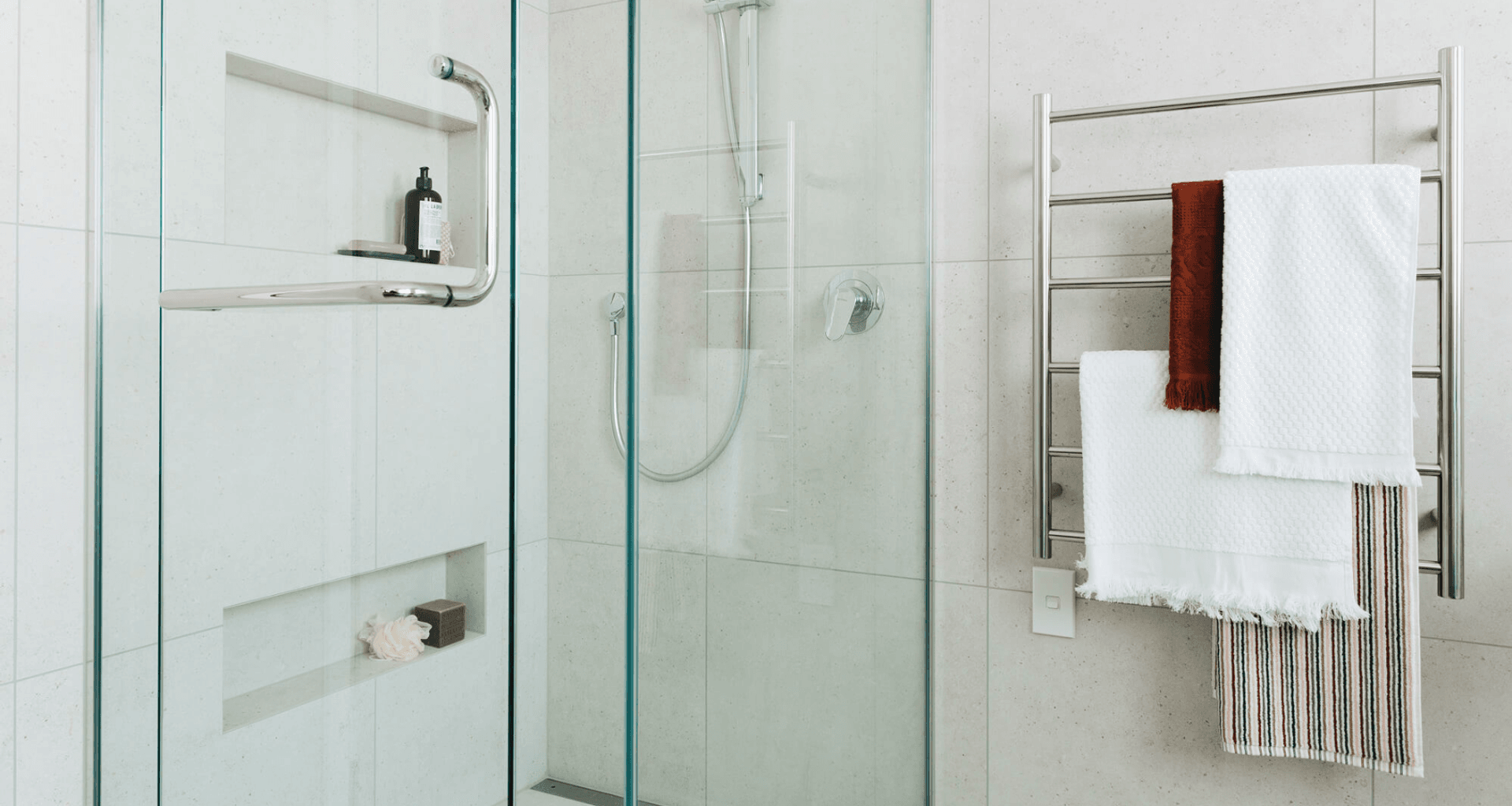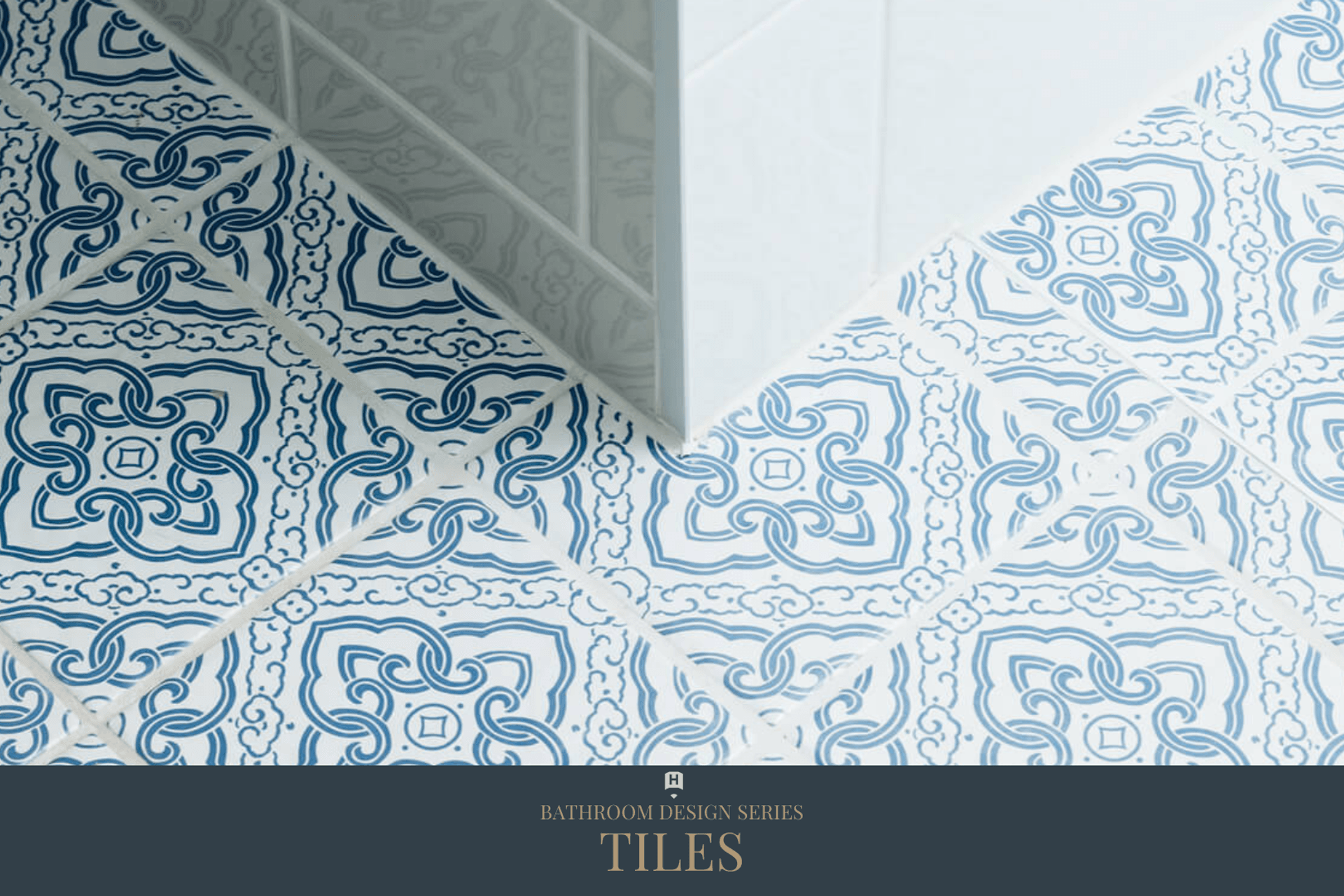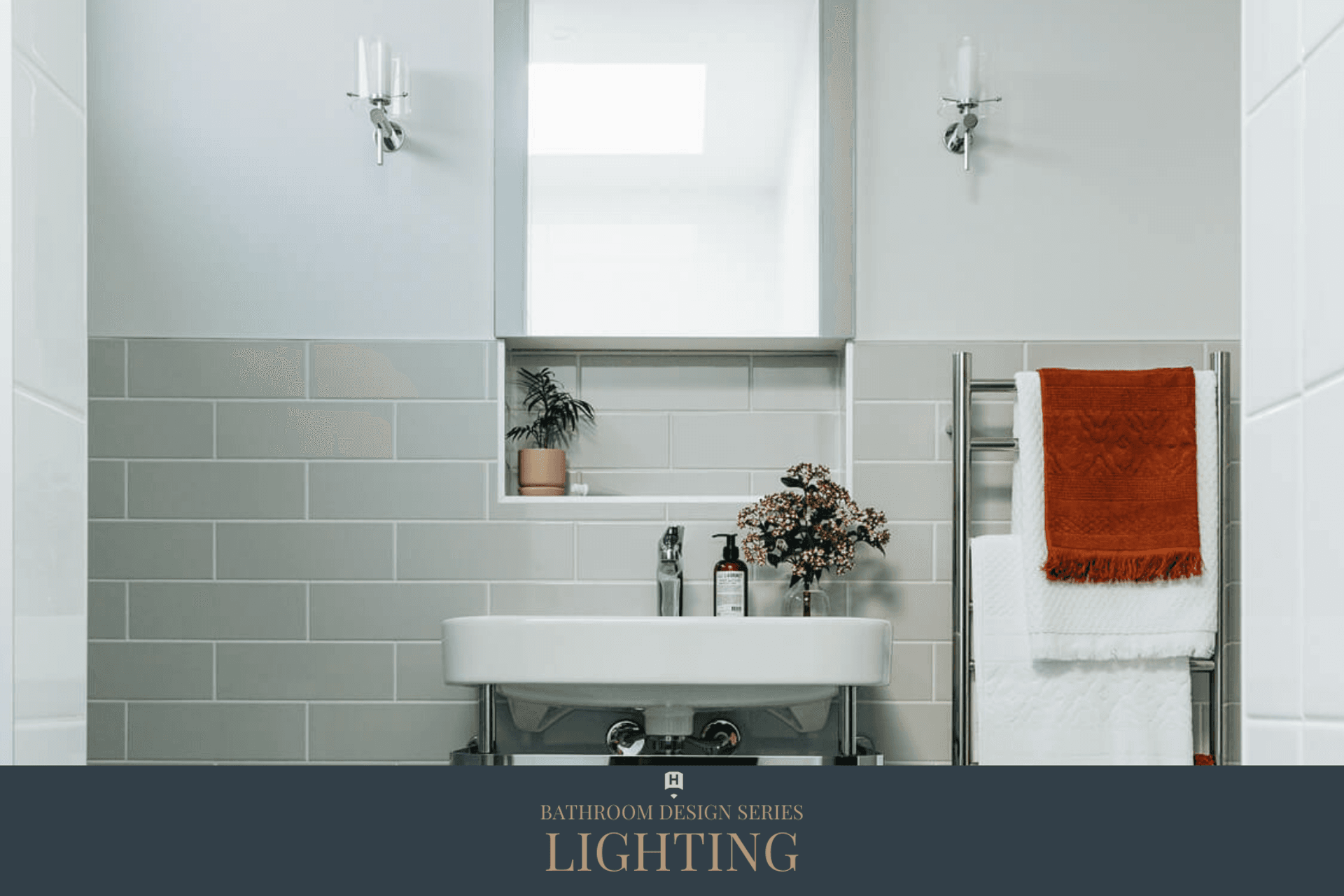Design Ideas for Your New Bathroom

TILES
The most influential aspect in your tile will be who lays them. A good tiler working to a thoughtful plan will make even the simplest tile look great. Grout lines aligned, careful cuts and mitred external corners will make a huge difference to a quality looking result.
In my opinion, generous use of tile adds a finished look to a bathroom, no matter how simple the tile is. You can use the same tile for wall and floor and add contrast in other fittings or make a feature tile the hero. With any feature material or colour the intention is to draw the eye to it, so apply your tiles to surfaces that create a pleasing shape or shapes and are worthy of the attention. Some tiles come as a family so you can use the same-but-different approach and select a different surface pattern or finish in one area to add subtle contrast.

LIGHTING
In a relatively small and distinct space, your lighting choices will be all the more apparent. Whilst you don’t want to overdo the lighting features (one statement is enough), you also don’t want leave it at a sufficient amount of light and instead think about the right type of light. General, mood and task: layer your light fittings to serve different purposes.
This goes for all lighting choices: when selecting a fitting you are not only thinking how it looks on the outside but what kind of light it will shed. For example, patterned or frosted glass cast a soft all-over light as opposed to strong shadows and directional light with an opaque shade.
Task light at your mirror differs from your desk task light in that can effect your self esteem :-). Aim for light to hit your face that is clear yet soft, creates no harsh shadows and is a warm colour temperature. Anything above a mirror needs to be diffused and angled thoughtfully with wall or pendant lights of on either side of your mirror or integrated LEDs good options for avoiding deathly under-chin shadows.
Put your fan and each light source, or considered combination of light sources, on different switches so you can control what goes on when. If you will be able to find peaceful moment in your bathroom, you will welcome the ability to isolate or dim fittings to create a soft glow.
You might want to include a low-level night light on a sensor for night trips to the bathroom so you don’t have to turn on the overhead lighting.
Finally, there are ‘protected zones’ in a bathroom related to their proximity to water and fittings in those areas need to be either low voltage, IP X4 rated or double insulated.

MIRRORS
As well as allowing us to check our morning face, mirrors reflect natural light and increase the sense of space in a room. When smaller and framed they create a distinct shape on a wall or when wall-to-wall they add another dimension to the space. Don’t underestimate the strength of effect of a mirror!
Now this is stating the obvious but mirrors ARE reflective so when planning where and how high, think about what is on the wall opposite and what part of your ablution routine you want to see yourself doing.

STORAGE
The good thing about planning bathroom storage is that it’s generally predictable in terms of what it will be used for. There are small things that need to be near the sink (toiletries, toothbrushes), medium things (spare shampoo, medicines) and bulky things (toilet paper, maybe spare towels) — so wall/mirror cupboards, vanity drawers, and tall, slightly deeper cupboards are fairly standard and easy to work out what will serve your needs. I personally really like having something eye-height and shallow for toiletries and a decent amount of vanity top or ledge space to put things on when in use.

DISPLAY & DETAILS
Bathrooms don’t need much display but an item or two to soften the often sharp lines are effective so plan for an open shelf or ledge to host a plant or a bud vase. Soap dishes, vanity handles, hand towels and other functional pieces can be selected with love and offer day-to-day pleasure when you use them.

WORKING WITH WATER
A well thought out bathroom that looks great well into the future will have thought carefully about water and what it does to surfaces, substrates, corners and crevices over time. Things progressively get gunky, go mouldy, rust and pucker when exposed to steam and surface water. Appropriate materials (for example, wet area paint, and epoxy grout), good workmanship and planning for connections between materials and minimising area for water to pool will save elbow grease and increase the longevity of your bathroom.

If you would like to get in touch about a bathroom or other interior design project, we would love to hear from you.Feel free to give me a call on 027 474 9194 or email frances@honourcreative.com. And for interior design inspiration, please take a look at some of our recent residential interior design projects.
You can also download our FREE resource, 12 Top Tips for the Ideal Interior Design Brief, a handy guide to developing your interior design brief, an essential part of the interior design process.
